This is a Quora answer worth sharing here. The original question was this:
“For those who have seen Song of the South, how offensive was it? Is Disney making the right decision in not releasing it?”
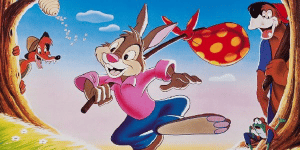
Song of the south: Br’er Rabbit’s Happy Place
This 9 minute clip is an encapsulation of the entire movie – it’s style, its substance, it’s brilliant hand-drawn animation, is story, and the relationship between characters. The only thing that’s missing is the conflict between Uncle Remus and the mother, which is captured in the next 50 seconds of the movie:
Song of the south: Conflict between Uncle Remus and the mother
So, in a little less than 10 minutes, you can get a really good idea of how the tenor and tone of the movie actually works. But is it offensive?
Plot
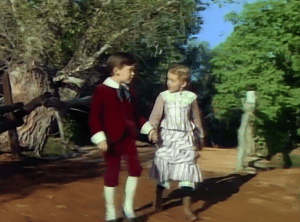
Johnny and Ginny, just before his attempted murder at the hands of bullies
Much of the movie follows this pattern: Johnny, a young boy born of a wealthy plantation owner in post Civil-War South, suffers at the hands of an absent father, hillbilly redneck bullies, and an overbearing mother, and has no one to turn to. He takes solace in the stories of – we assume – a former slave named Uncle Remus. His mother, born of an era where this type of fraternizing was Not Ok™, tries her best to keep Johnny and Uncle Remus apart. She doesn’t like the influence Remus’ stories are having on her son.
Now, in that first clip, we see Uncle Remus comforting Johnny and Ginny who had been bullied (the two bullies were actually Ginny’s older brothers). Uncle Remus literally steps in at the last second to save Johnny from serious injury at the hands of the bullies.
There are several themes in this movie that children can relate to: bullies, unfair mothers, stories of talking animals. As adults, we can see the impact that Remus is having on Johnny – when Ginny is distraught at the ruination of her dress, Johnny even attempts to lower his voice to sound like Uncle Remus as he recounts one of the earlier stories in the film.
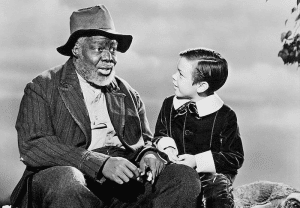
Johnny finds a much-needed mentor
At the end of the day, it’s Uncle Remus’ character and charm that wins over the day. His influence is far greater than the latent racism of the 19th century plantation, and even Johnny’s mother comes to understand that the wisdom and kindness of Uncle Remus transcends the racial isolationism she has come to count on.
That’s the plot. There is no racism in the plot.
For a film made at the tail end of WWII, and at the same time where the Marx Brothers had to cut out all of the dancing scenes with black actors in order to be shown in southern movie theatres, an entire film where the main moral compass is a black man is nothing short of astounding. Disney created this film knowing that it would likely be banned in the very South the movie was set in.
As Lee Thé points out, the film is a tribute to black culture.
Characters
What about the characters?
The black characters in the movie are – to a person – good, kind, friendly, wise, and positive.
(Hang on, hang on, I’ll get to the animated sequences in a moment).
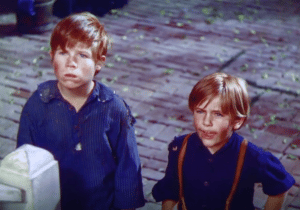
The redneck South embodied in the two bullies
White characters, on the other hand, are more often than not stupid, unkind, bullies, poor listeners, quick-to-judge, and unfair. Johnny – the protagonist – had such a high-pitched register that if it weren’t for Bobby Driscoll’s sympathetic performance, we probably would have hated him on sight.
Much of the criticism of the portrayal of blacks is focused on the fact that, by and large, they are “patronizing and stereotyped.” The accents are indicative of everything that was atrocious about the portrayal of black culture at the time the movie was made.
This is absolutely true.
It is also the case, however, that this is absolutely true of every character in the movie. No one is spared as every stereotype is fully explored, across every stripe of character in the movie. The dumb, redneck barefoot white inbred kids. The haughty aristocratic mother (who, in her defense, is trying to cope with the economic and political changes around the plantation without the help of her husband, but is failing miserably and knows it).
Taken through the lens of Walt Disney’s own poor upbringing, it’s not hard to see that there was an attempt to cast the most unpleasant environment possible for young Johnny, surrounded on all corners by the injustices of his time, place and station.
The Escape into Animation
Is it any wonder, then, that Song of the South makes such a drastic shift between the rather muted color palette of the live action sequences, when compared to the animation?
Given the day-to-day struggles of a 5 year old boy in those circumstances, how could he not resist the lure of the comfort and wisdom of Uncle Remus?
Taken at face value, the animation inserts into the movie were nothing short of a stroke of genius. But before we get there, let’s discuss what those sequences are, as that helps guide our understanding of whether or not they should be judged and, if so, in what way.

One of the most controversial scenes in the movie
First and foremost, the Br’er Rabbit animation shorts are parables. Uncle Remus uses them to teach Johnny about the nature of bullies, mostly, and how to deal with them. In the clip linked above, you can see this direct link between Johnny’s current situation (trying to cheer up Jenny) and Uncle Remus’ story about the Happy Place.
In all of the animations, Br’er Rabbit gets the better of his bullies (Br’er Fox and Br’er Bear) through the use of his wits and guile in ways very similar to what Johnny is going through. After all, that’s what parables are for.
It’s also very important to understand that these parables are supposed to be black culture parables. The animals in the stories are supposed to represent something indigenous to Uncle Remus’ imagination, and to that end it’s worth noting that all of the characters therein – both good and bad – are supposed to represent black stereotypes. (Parables work because they have easily identifiable character types, and the lessons drawn from them are based upon how those characters overcome their situations. No one expected Aesop to create great character development in Sour Grapes.)
What I mean by this is that the hero in the story isn’t a white caricature besting black caricatures. If that were the case, then the accusation of racism would be an open and shut case. Instead, it’s about someone coping with and besting his bullies – regardless of what caricature they’re based from. It would have the same impact if Uncle Remus was Bavarian and Br’ers Rabbit, Fox, and Bear all wore lederhosen.
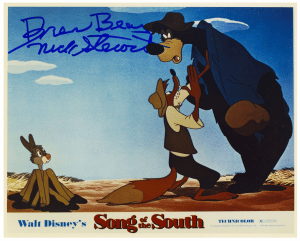
Autographed Photo by Nick Stewart
(Unfortunately, despite rumors to the contrary, the actors playing those animated characters were black, so accusations that it was a systematic design to be racist is simply not supported.)
In other words, the animation sequences were put there in order to show, in a very visual manner, how Johnny was interpreting the stories. It appears that most people remember those sequences more than the live action elements, which interestingly enough underscores the point. Johnny, the boy who was trying to escape his own live-action troubles, remembered them too.
Those animated sequences were often taken out of context and shown as shorts on the Wonderful World of Disney, which lent itself to much of the current stress over its appropriateness now. We’ll get to that in a second.
Throughout the movie you see Johnny attempt to apply those lessons to his life. Some have good results, and some don’t. But here you have a young, privileged white boy taking his moral marching orders from a black man – something no film had ever shown before in the history of cinema.
And coming from a major studio, no less.
Offense, Racism, and Insensitivity
Over time, tastes change. We also tend to get tunnel vision about events and elements and reconstruct social environments and pass judgment without understanding the conditions of the times and the trajectory of progress.
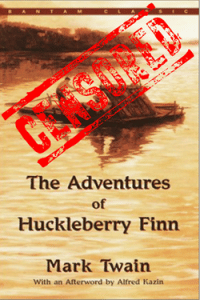
You are too stupid to find out for yourself
Others have talked about Mark Twain and The Adventures of Huckleberry Finn. There is good reason to make a comparison between that book and this movie.
Just like Song of the South, there is language in that text that – to 21st Century minds – is profoundly upsetting. It was written entirely in the common vernacular at the time which, if you compare side by side, is not that dissimilar to how the characters talk in Song.
For his time, Mark Twain was considered a raging progressive, but to misinformed students of pop culture in 2020, the very presence of offensive words and accents must mean that he was a racist scumbag of a human being.
Mark Twain wrote Finn in the 1880s, at a time when having a black protagonist was about as wide-eyed radical as one could imagine. I mentioned it above that Disney, by releasing a movie about a strong moral code being delivered by a black protagonist in 1946, was trying to turn the tide of the sentiment against prejudices that – even in the 1940s – were long held and rampant.
Taken at face value, though, it’s difficult to argue about whether or not the content qualifies as “racist” and “insensitive.”
Racism, for example, is the belief in the superiority or inferiority of person or group of people based upon race.

RIP, rational thinking
Racism is not, however, indicated by whether or not someone speaks with an accent. If that were the case, then every black comedian who over-pronates their vowels to sound like a white person would be equally as liable for the accusation. Even in Song, each white person exaggerates the American Southern accent (and more often than not miss the mark). So, even by such a questionable standard the movie plays no favorites.
Racism is also not determined by the presence or absence of stereotypes (though the correlation is pretty damn high). Stereotypes that reinforce the superiority or inferiority of a group are indications of racism, but when applied to Song it is really difficult to sustain the argument.
In Song, stereotypes are ubiquitous, across both black and white characters. The stereotypes are not used to indicate superiority or inferiority, however. In fact, there are both protagonists and antagonists who are stereotyped. This is clearly seen by the animated sequences where Br’ers Rabbit, Fox and Bear are using accents and are part of a specific parable, but there is a protagonist as well as antagonists in the story.
Even in the live action, if there is an argument to be made for superiority based upon race, it would have to be that Uncle Remus and his stories are far, far superior than the supposedly ‘privileged’ morality of the white characters. In fact, the redneck kids are arguably more stereotyped for that day and age than Uncle Remus, because having a black protagonist character definitely was not a stereotype in the 1940s.
As far as the claim of insensitivity, it isn’t clear to me to whom the movie is designed to be insensitive. To us, in 2020? Well, that’s a bit difficult to pin down as something that someone writing the script in 1940 should reasonably be expected to predict.
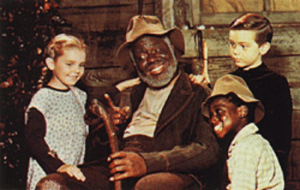
White children learning from…a black man? Heresy!
Again, we need to point to the fact that the very existence of this plot line – where an impressionable white boy is taking moral lessons from a black man – was radically progressive at the time. If there is an argument to be made for insensitivity, it was a giant “screw you” to all the Southern theatres that would only show white people on the movie screen in the first place.
I was not born at the time of its release – there were a few decades to go for me – so I cannot begin to place myself in the shoes of moviegoers in that day and age. For a country picking itself up out of the carnage that was WWII, there was a longing for a simpler time and era, and many a child’s nightmares needed to be soothed.
Song of the South was attempting to do just that. If you take a look at the story and the lessons therein, you can see that the moral is that even as a child you can have control over your world by using your wits and being clever. What’s more, that moral lesson comes from a black man.
Should Disney Re-Release?
No one – not me, not you, not Disney, not anyone – can dictate whether or not you should be (or should not be) offended by something.
Seen by modern standards, the movie is difficult to watch – both technically and morally. It’s slow. The plot meanders. The children’s voices are extraordinarily difficult to listen to. There are scenes of extreme violence (the clip above shows one child outright attempting to murder another). As has been noted, the characters are one-note (i.e., all the characters are one-note).
Listening to the characters talk gives me the same reaction when I first read Huckleberry Finn and flinched whenever I saw language that I knew was wrong and inappropriate.
But watching that movie in the theatre when I was a child, I loved James Baskett’s Uncle Remus. I wished I had had an Uncle Remus in my life. He was my hero, and he taught me lessons about using wit over fists, and was a huge role model for me. Years after the dialogue faded from memory, I remembered the strength of character, the pathos, the sheer dignity that James Baskett presented on screen.

Who wouldn’t want this man as a mentor?
Looking back now, it’s difficult to underestimate just how much influence Baskett had on my interpretation of how to deal with bullies. As a child growing up in the 1970s, I was the little kid, and then the fat kid, and always the ‘new’ kid – and bullies were a way of life. Just like Johnny, some of the things I tried worked, and many did not.
Mr. Baskett died only two years after the release of the film, and I do think it is a shame that modern children won’t be able to see his Academy Award-winning (honorary, sadly) performance. Like I said, he was a hero to me for many years.
It is almost impossible to think that the movie could be released now to an unbiased audience. For years the movie had been labeled as “racist” by people who had never seen it – so much so that it’s taken as a given. Is it even possible to release the film with the hope that it could be taken with ‘fresh eyes”?
However, the economics of a release is very different than preventing you from seeing it. Many of the answers I have read to this question indicate that you, dear reader, are incapable of making a decision for yourself and should not ever be allowed to watch the film.
To that perspective, I politely decline to allow someone to make that determination for me.
Up to You
If you want to have the agency to see for yourself, and make up your own mind, you can experience the full movie with your own eyes and ears.

South of the South – or how a giant “Screw You” to Racism became labeled “racist.”

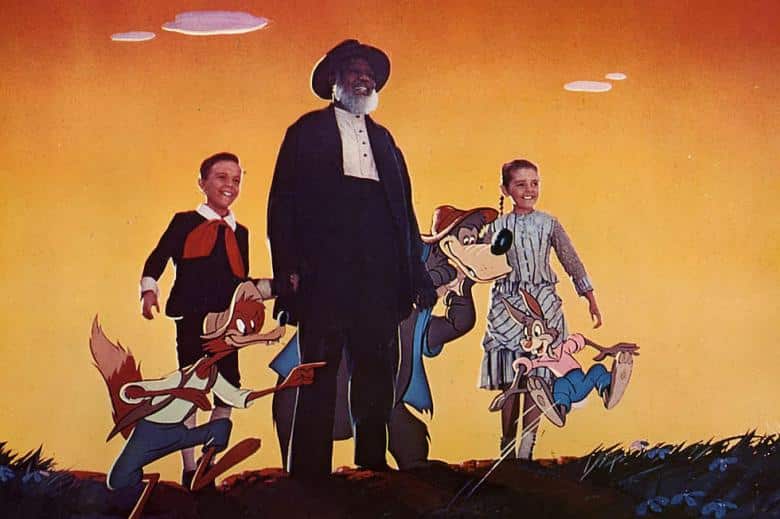
Comments
Thanks for posting this, J.
Song of the south was a lovely movie, full of heart and love.
I think it should be re-released. Yes, it’s a period piece that we view with different eyes today. But the message is one we can all learn from. I’m going to try to show it to my grandkids.
Thanks for commenting. Hopefully your grandkids will enjoy it as much as we did. 🙂
J, thanks for posting the clips and links. Preserving treasures like this is a great use of storage.
There is something magical about Splash Mountain that draws on the spirit of Song of the South. I’ve been hoping to find the film on Disney+ and am glad you shared. Appreciate the thoughtful views and perspective. I find your writing has a little Uncle J reMETZ twinkle and it is much appreciated.
Ok, this made me laugh. 🙂
Glad you found the links helpful. 🙂